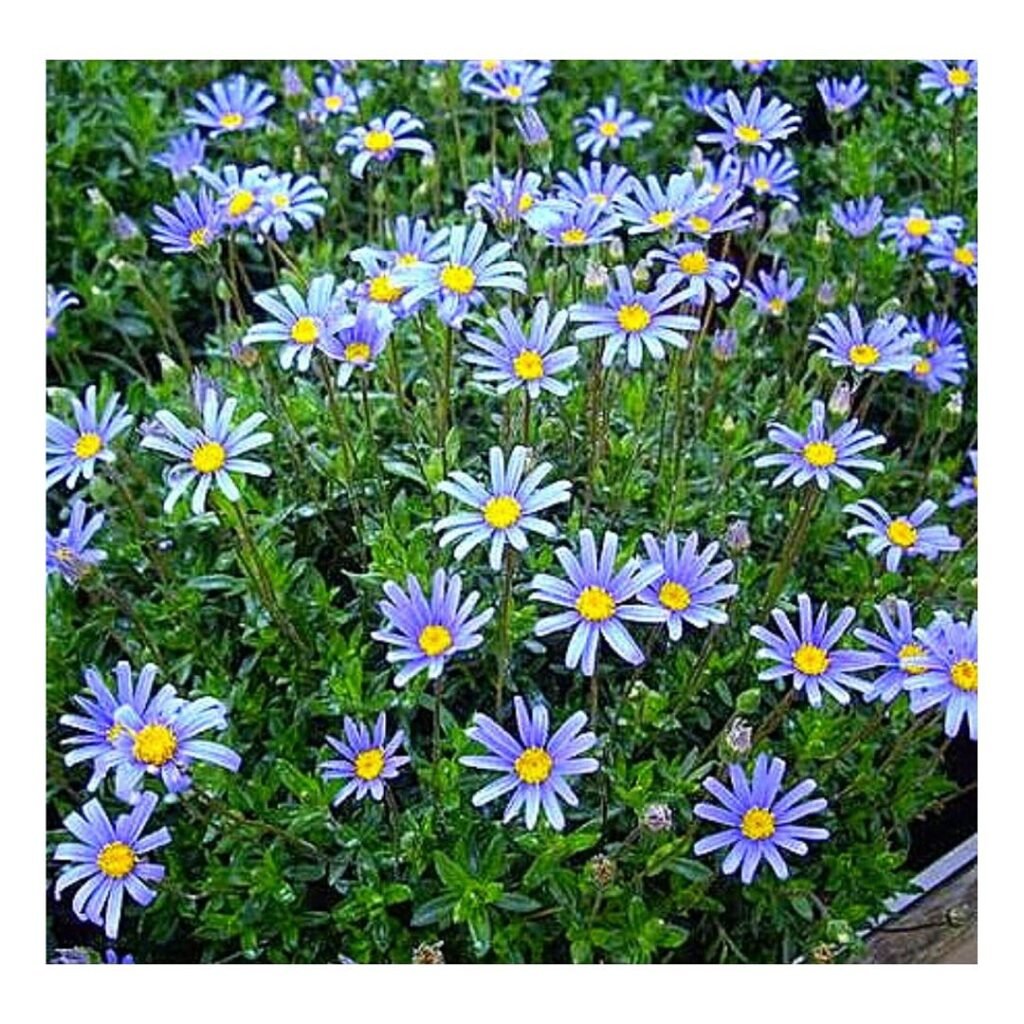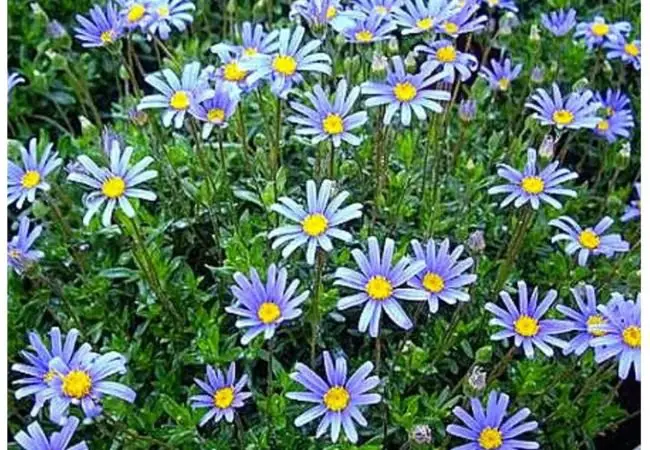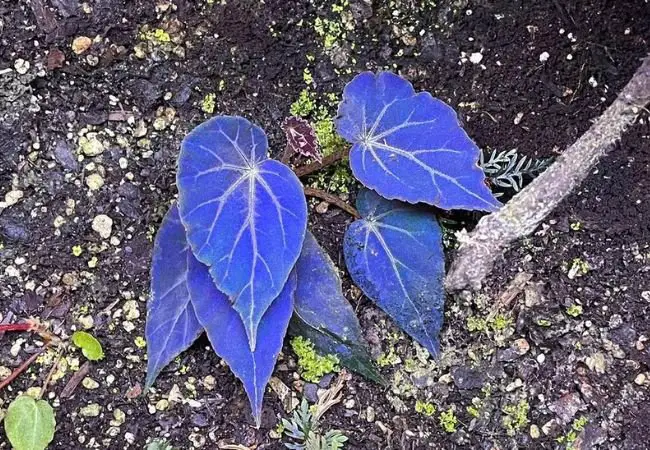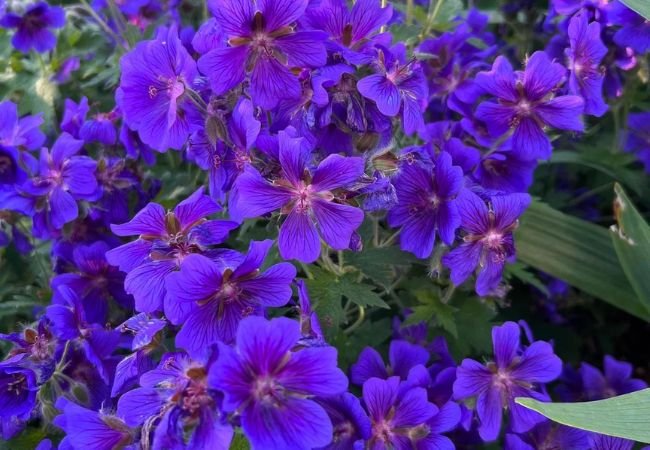Discover how to grow and care for the striking cobalt blue daisy. Learn expert tips on cultivation, propagation, and maintenance of this unique flower. Perfect for gardeners seeking a touch of the extraordinary.
The cobalt blue daisy, scientifically known as Felicia amelloides, is a striking perennial flower native to South Africa. It features vibrant blue petals surrounding a yellow center, growing 12-18 inches tall. This sun-loving plant thrives in well-draining soil and moderate watering, making it ideal for rock gardens, borders, and containers.
As a horticulturist specializing in rare and exotic flowers, I’m thrilled to share my expertise on the captivating cobalt blue daisy. This guide will walk you through everything you need to know about cultivating this eye-catching bloom in your garden.
Understanding the Cobalt Blue Daisy

The cobalt blue daisy, despite its common name, is not a true daisy but belongs to the Asteraceae family. Its scientific name, Felicia amelloides, honors Félix de Avelar Brotero, a Portuguese botanist. The plant is also known as Blue Marguerite or Kingfisher Daisy.
For more information on the taxonomy of Felicia amelloides, visit the Global Biodiversity Information Facility (GBIF) page.
Growing Conditions
Climate and Hardiness
Cobalt blue daisies are hardy in USDA zones 9-11. In colder regions, they can be grown as annuals or overwintered indoors.
Sunlight Requirements
These plants thrive in:
- Full sun to partial shade
- At least 6 hours of direct sunlight daily
Soil Preferences
For optimal growth, provide:
- Well-draining soil
- Slightly acidic to neutral pH (6.0-7.0)
- Rich in organic matter
For more on soil preparation, check out the Royal Horticultural Society’s soil advice.
Planting Cobalt Blue Daisies
When to Plant
- Spring or early summer in most regions
- Fall in areas with mild winters
Planting Process
- Choose a suitable location based on sunlight and soil conditions
- Dig holes twice the width of the root ball and at the same depth
- Place plants 12-18 inches apart
- Water thoroughly after planting
Care and Maintenance
Watering
- Keep soil consistently moist but not waterlogged
- Water deeply once or twice a week, depending on climate
Fertilizing
- Apply a balanced, slow-release fertilizer in spring
- Feed monthly during the growing season with a liquid fertilizer high in phosphorus to promote blooming
For more on fertilizing practices, visit the University of Maryland Extension’s guide.
Pruning and Deadheading
- Pinch back young plants to encourage bushiness
- Deadhead regularly to promote continuous blooming
- Cut back by one-third in late winter or early spring
Propagation Methods
From Seeds
- Sow seeds indoors 6-8 weeks before the last frost date
- Maintain temperatures around 65-70°F (18-21°C)
- Transplant seedlings outdoors after danger of frost has passed
From Cuttings
- Take 3-4 inch stem cuttings in late spring or early summer
- Remove lower leaves and dip in rooting hormone
- Plant in a well-draining potting mix and keep moist
For more detailed propagation techniques, check out the North Carolina State Extension’s plant propagation guide.
Common Pests and Diseases
Pests
- Aphids
- Spider mites
- Whiteflies
Control with insecticidal soap or neem oil.
Diseases
- Powdery mildew
- Root rot (in poorly draining soils)
Prevent by ensuring good air circulation and proper watering practices.
For more information on plant diseases, visit the American Phytopathological Society’s website.
Landscaping with Cobalt Blue Daisies
Garden Uses
- Rock gardens
- Border plants
- Container gardens
- Butterfly gardens
Companion Plants
Pair with:
- Yellow coreopsis for color contrast
- Lavender for a Mediterranean feel
- Ornamental grasses for texture variation
The cobalt blue daisy is a stunning addition to any garden, offering a unique and vibrant color that’s sure to catch the eye. With proper care and attention to its needs, this South African beauty can thrive in a variety of garden settings. Remember to provide well-draining soil, plenty of sunlight, and consistent moisture for the best results. Whether you’re an experienced gardener or a novice, the cobalt blue daisy is a rewarding plant that will bring a touch of the extraordinary to your outdoor space.
For more information on exotic and unusual plants, visit the Royal Botanic Gardens, Kew website.
For more gardening tips and plant care guides, visit usagardenhub.com.






